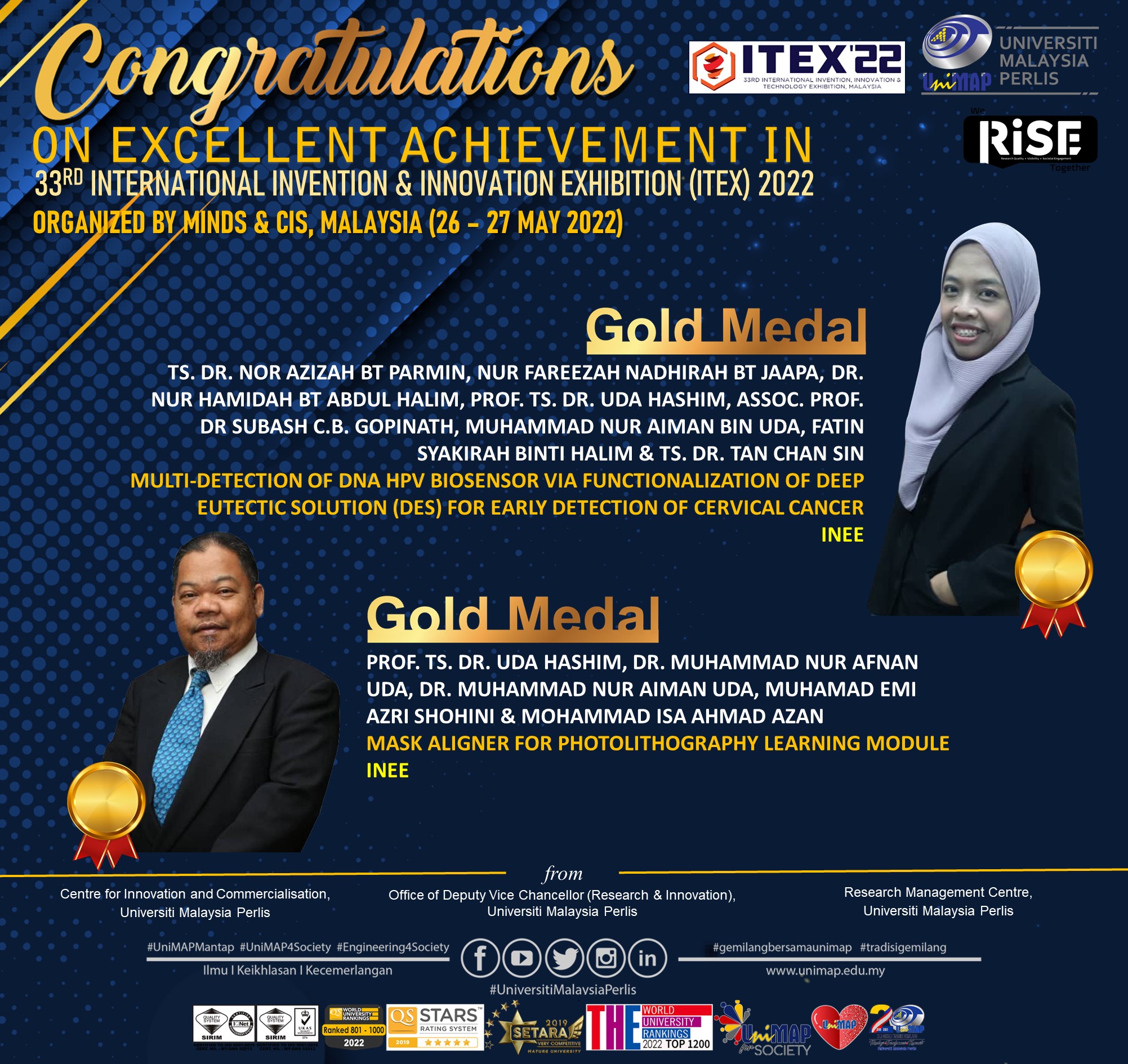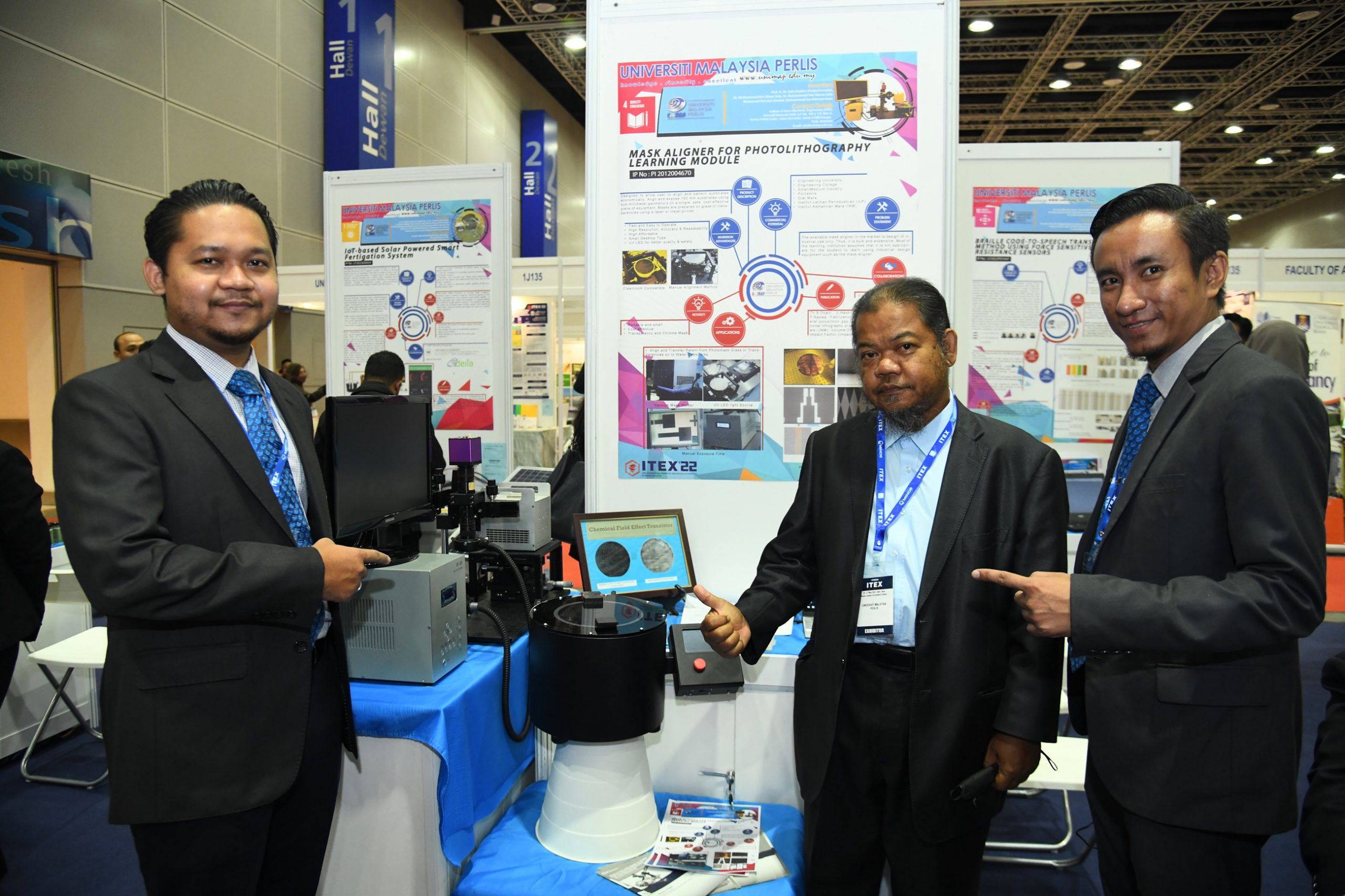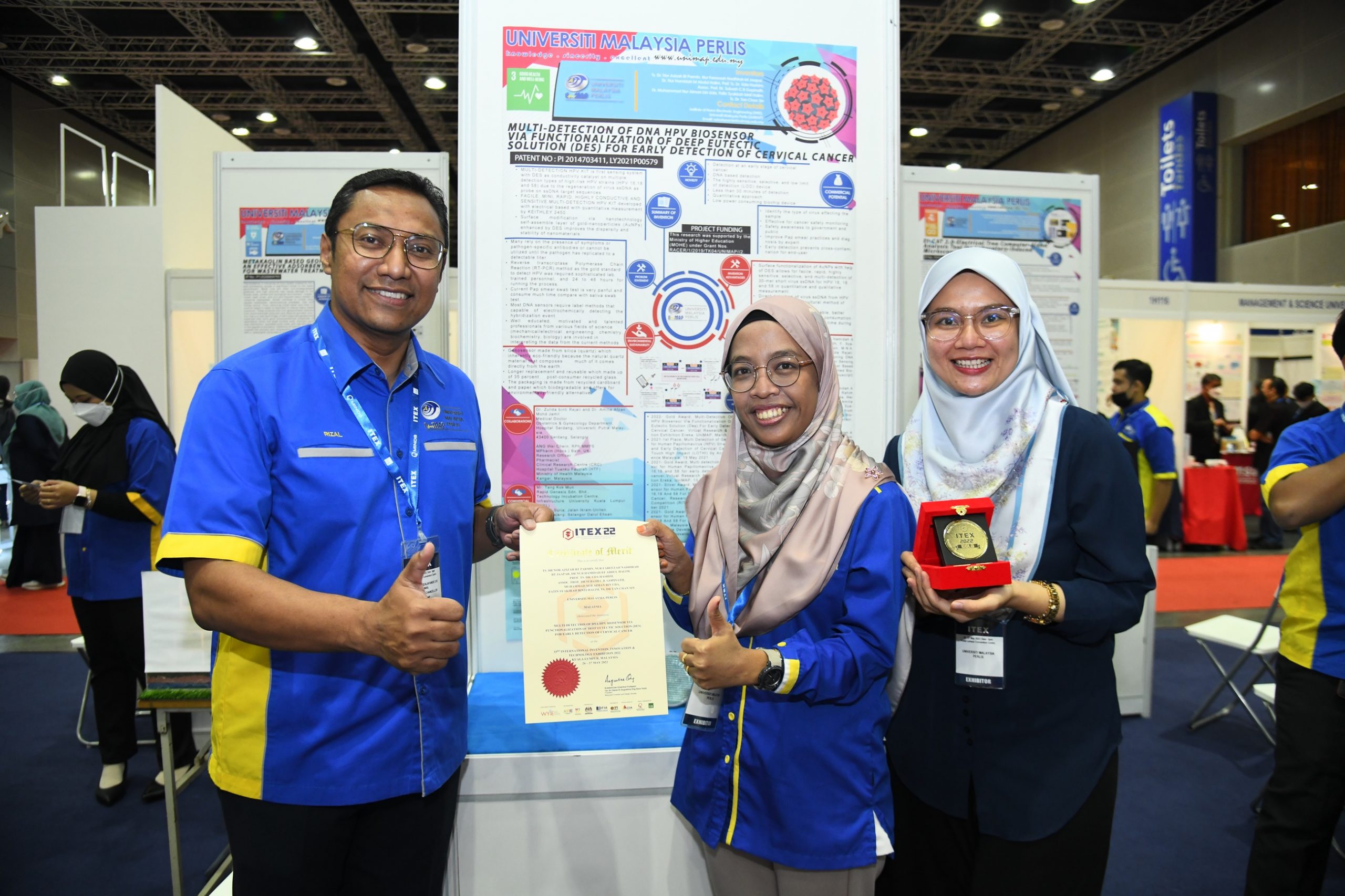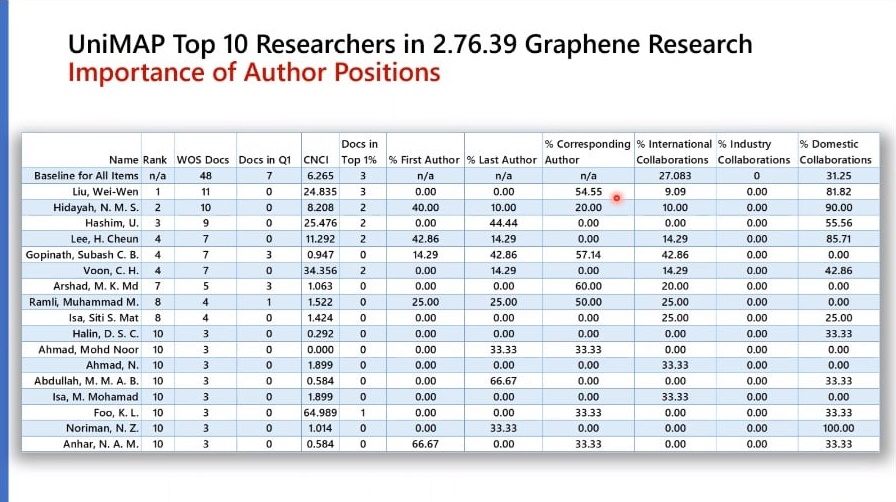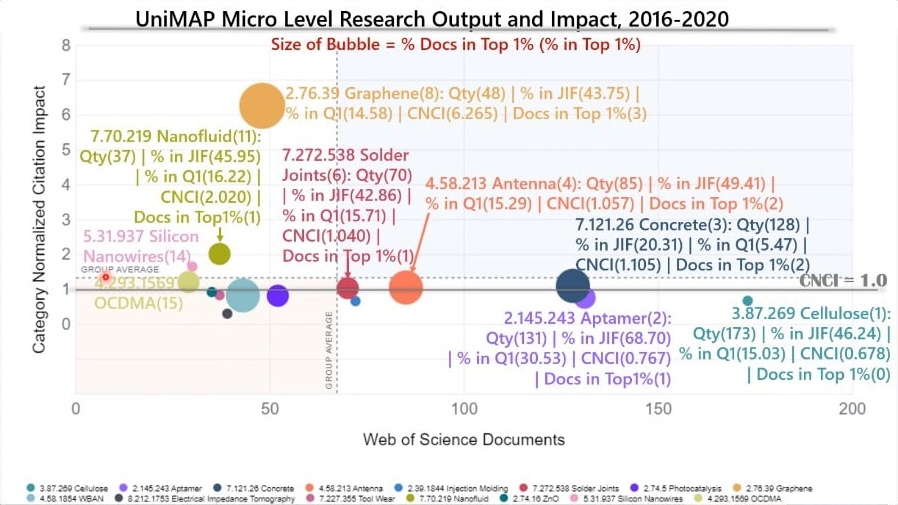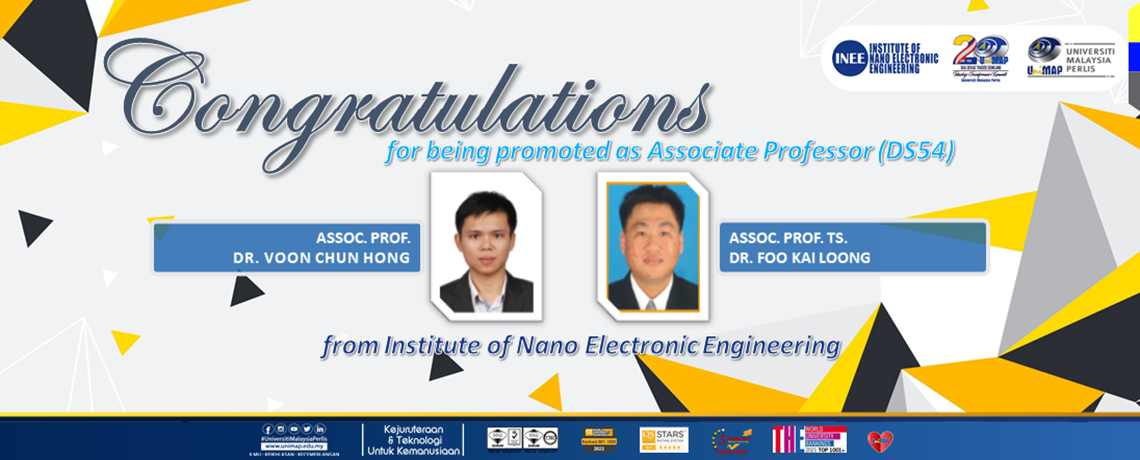On 26 & 27 May 2022, the 33rd International Invention, Innovation & Technology Exhibition (ITEX 2022) was held at the Kuala Lumpur Convention Center, Malaysia.
Universiti Malaysia Perlis (UniMAP) has sent 30 products this time including two products from the Institute of Nano Electronic Engineering (INEE).
The two products are Multi-Detection of DNA HPV Biosensor via Functionalization of Deep Eutectic Solution (DES) for Early Detection of Cervical Cancer led by Ts. Dr. Nor Azizah Parmin and Mask Aligner for Photolithography Learning Module led by Prof. Ts. Dr. Uda Hashim.
Both products have received gold awards from ITEX 2022. In addition, UniMAP has received the ITEX Golden Award after collecting 21 Gold, 8 Silver and 1 Bronze.
Congratulations to all UniMAP researchers and in particular to INEE researchers.
